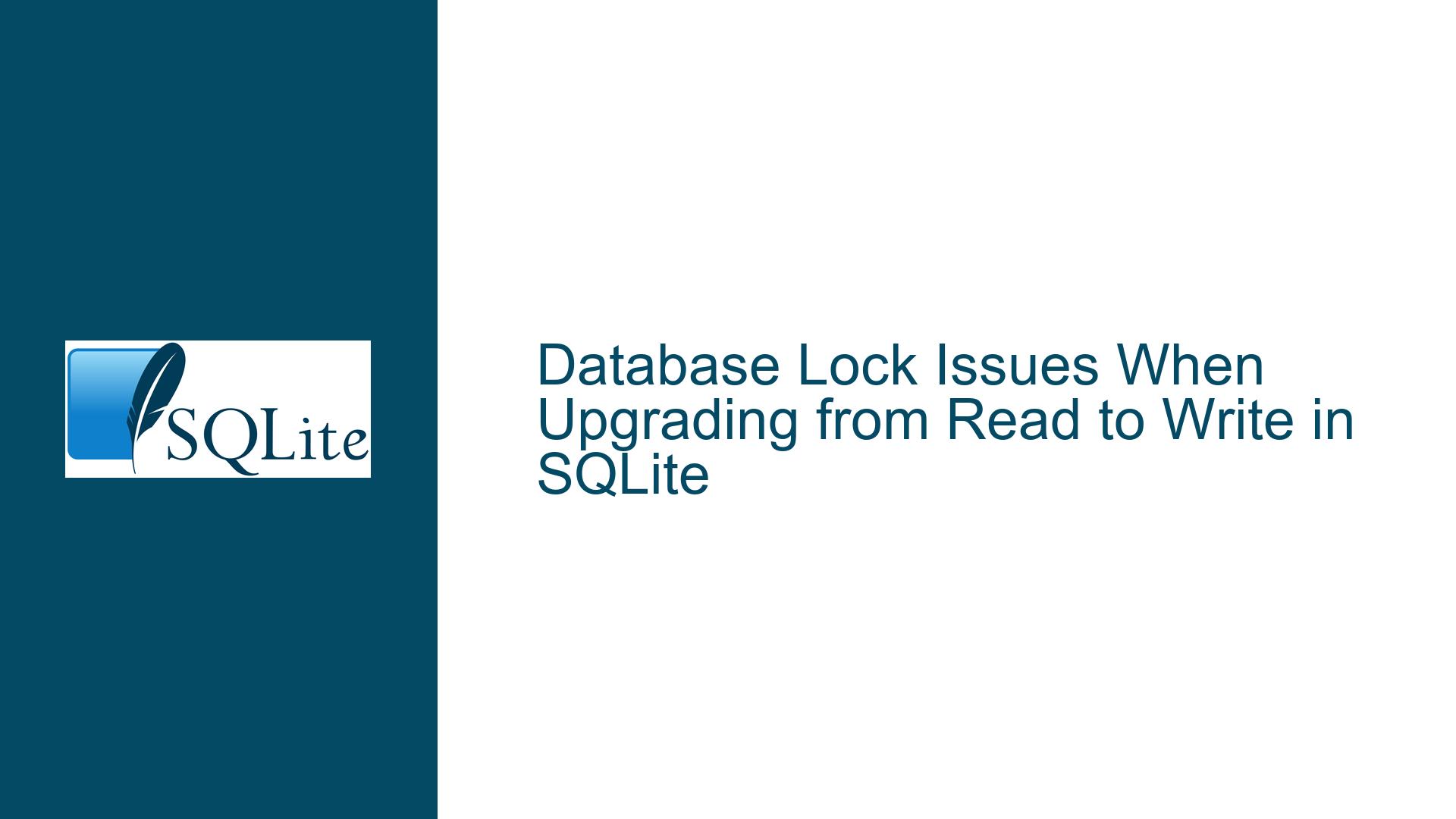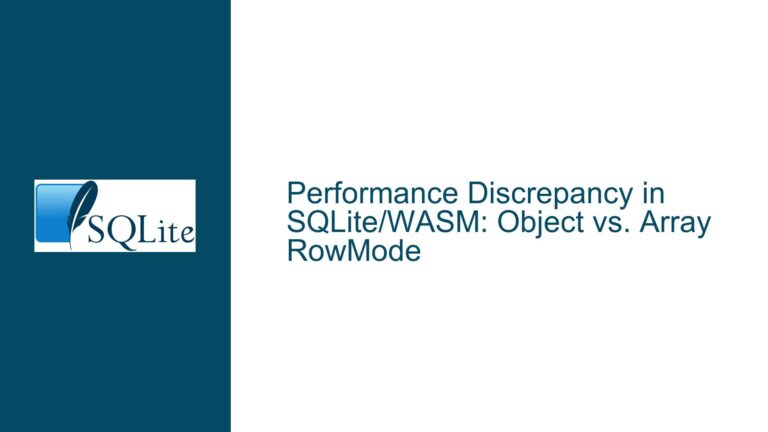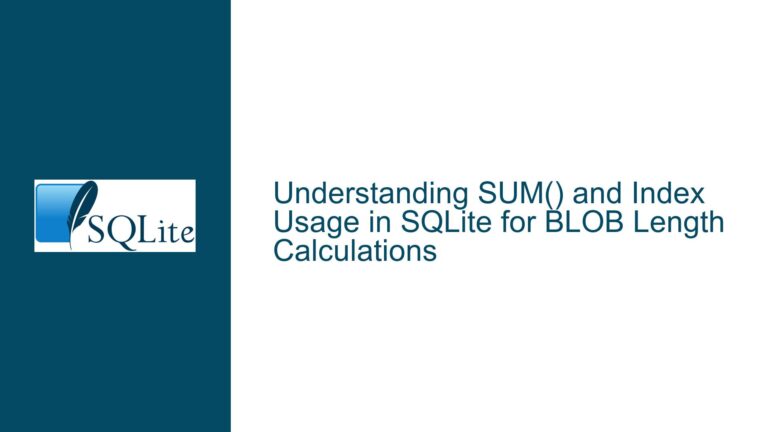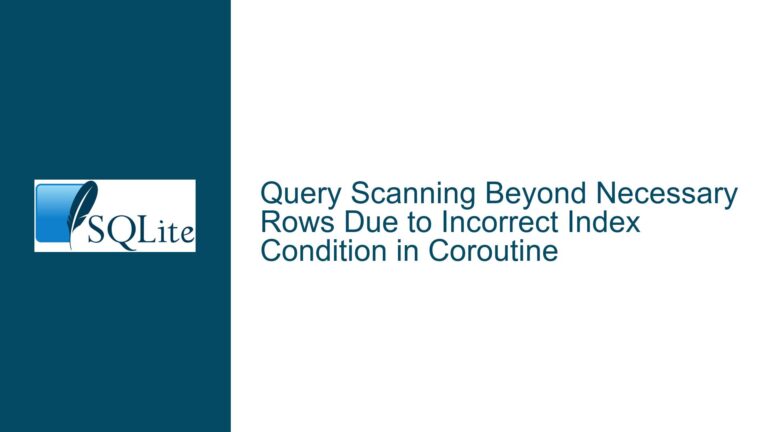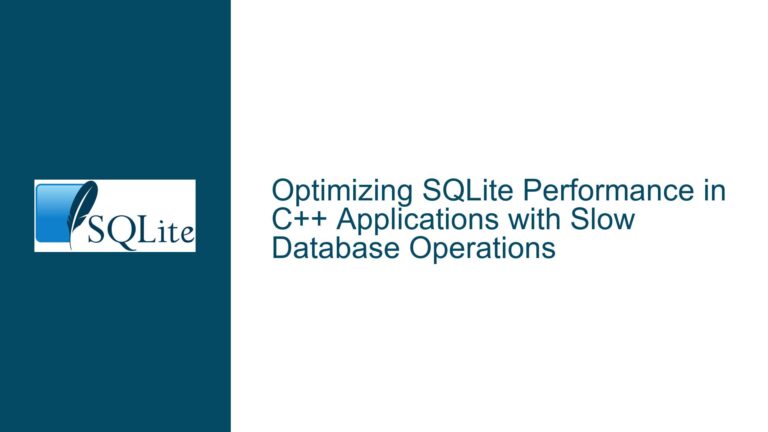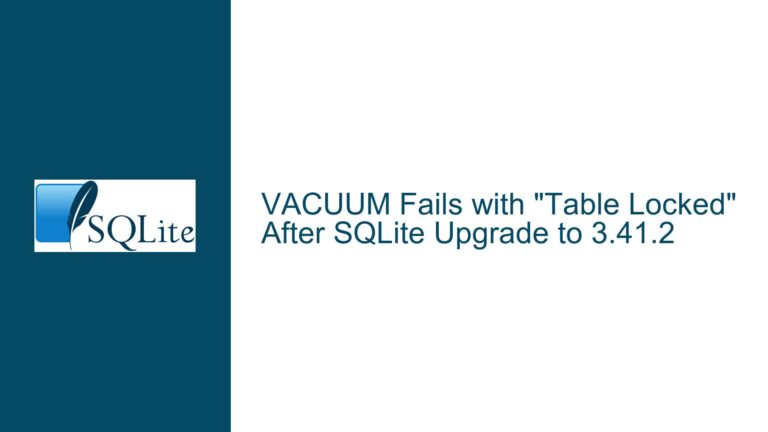Database Lock Issues When Upgrading from Read to Write in SQLite
Understanding SQLite Transaction Locking Behavior
SQLite is a lightweight, serverless database engine that is widely used in applications where simplicity and ease of deployment are paramount. However, its locking mechanism, especially when transitioning from a read transaction to a write transaction, can be a source of confusion and frustration for developers. This post delves into the intricacies of SQLite’s transaction locking behavior, particularly focusing on the challenges that arise when upgrading from a read transaction to a write transaction.
Issue Overview
The core issue revolves around the behavior of SQLite when a transaction that begins with a read operation (SELECT) attempts to upgrade to a write operation (INSERT, UPDATE, DELETE). In SQLite, a transaction can be started in one of three modes: DEFERRED, IMMEDIATE, or EXCLUSIVE. The default mode, DEFERRED, does not acquire any locks until the first operation is executed. If the first operation is a SELECT, the transaction acquires a shared read lock. If the first operation is a write operation, the transaction attempts to acquire a reserved write lock.
The problem arises when a transaction starts with a SELECT (thus acquiring a shared read lock) and then attempts to perform a write operation. At this point, SQLite needs to upgrade the transaction from a read lock to a write lock. However, this upgrade can fail if another transaction holds a write lock or if another transaction is also attempting to upgrade to a write lock. When this happens, SQLite immediately returns a "database is locked" error, without waiting for the lock to be released. This behavior can be particularly problematic in applications where there is a delay between the read and write operations, such as when processing data retrieved from the database.
Possible Causes
The immediate failure to upgrade from a read lock to a write lock can be attributed to several factors. First, SQLite’s locking mechanism is designed to prevent deadlocks. If a transaction holds a read lock and attempts to upgrade to a write lock while another transaction holds a write lock, a deadlock could occur. To avoid this, SQLite immediately fails the upgrade attempt, forcing the application to retry the transaction.
Second, the behavior is influenced by the type of journaling mode used by SQLite. In non-WAL (Write-Ahead Logging) mode, upgrading a read transaction to a write transaction requires acquiring an exclusive lock, which can only be obtained if no other transactions hold a read lock. In WAL mode, the locking mechanism is more relaxed, allowing multiple readers and a single writer to coexist more easily. However, even in WAL mode, upgrading a read transaction to a write transaction can still fail if another transaction holds a write lock.
Third, the use of PHP’s PDO (PHP Data Objects) extension can complicate matters. PDO abstracts the underlying database operations, and while it provides a consistent interface for interacting with different database systems, it can also obscure the details of SQLite’s locking behavior. For example, PDO’s default transaction handling may not align perfectly with SQLite’s locking model, leading to unexpected behavior.
Troubleshooting Steps, Solutions & Fixes
To address the issue of database locks when upgrading from a read transaction to a write transaction, several strategies can be employed. The first and most straightforward approach is to use BEGIN IMMEDIATE or BEGIN EXCLUSIVE when starting a transaction that is expected to perform write operations. BEGIN IMMEDIATE acquires a reserved write lock at the start of the transaction, ensuring that no other transactions can acquire a write lock until the current transaction is completed. BEGIN EXCLUSIVE goes a step further by acquiring an exclusive lock, preventing any other transactions from reading or writing to the database until the current transaction is completed.
Using BEGIN IMMEDIATE or BEGIN EXCLUSIVE can prevent the "database is locked" error by ensuring that the necessary locks are acquired before any read or write operations are performed. However, this approach may not be feasible in all scenarios, particularly in applications where the need for write operations is not known at the start of the transaction.
Another approach is to implement a retry mechanism in the application code. When a "database is locked" error is encountered, the application can catch the error, roll back the current transaction, and retry the entire transaction after a short delay. This approach can be effective in scenarios where the lock contention is temporary and the likelihood of success increases with retries. However, it requires careful handling to avoid infinite retry loops and to ensure that the application remains responsive.
In some cases, switching to WAL mode may be a viable solution. WAL mode allows multiple readers and a single writer to coexist more easily, reducing the likelihood of lock contention. However, WAL mode is not suitable for all applications, particularly those that require frequent checkpointing or that run on systems with limited resources.
Finally, it is important to carefully review the application’s transaction handling logic. In some cases, the issue may be exacerbated by long-running transactions or by transactions that hold locks for extended periods. By minimizing the duration of transactions and ensuring that locks are released as soon as possible, the likelihood of encountering "database is locked" errors can be reduced.
In conclusion, the issue of database locks when upgrading from a read transaction to a write transaction in SQLite is a complex one that requires a deep understanding of SQLite’s locking mechanism and careful consideration of the application’s transaction handling logic. By employing strategies such as using BEGIN IMMEDIATE or BEGIN EXCLUSIVE, implementing a retry mechanism, switching to WAL mode, and optimizing transaction handling, developers can mitigate the risk of encountering "database is locked" errors and ensure the smooth operation of their applications.
